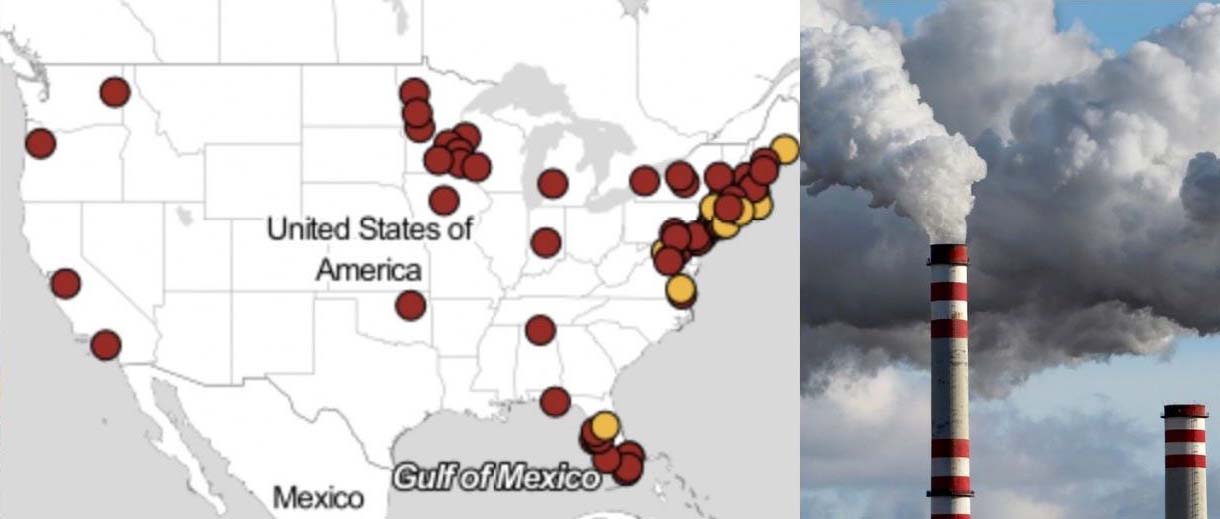New School Map Reveals Most Incinerators pollute Low-Income and Communities of Color, Worsen Climate ChangeNearly 4.5 million people in the U.S. are exposed to pollution from waste incinerators, 85% of which are located in environmental justice communities |
New York, May 31, 2022 — Seventy-two municipal solid waste incinerators still operate in the U.S., but little is widely understood about their impacts. A new interactive map from the Tishman Environment and Design Center at The New School pinpoints each of their locations for the first time, revealing that they are overwhelmingly located in vulnerable communities already impacted by excess pollution. The new map builds upon the Tishman Center’s research into the human and ecological impacts of municipal waste incineration detailed in the report U.S. Municipal Solid Waste Incinerators: An Industry in Decline and state-specific reports on the five states with the highest number of incinerators—Florida, New York, Minnesota, Massachusetts, and Pennsylvania. “Many of the incinerators currently operating are near the end of their lifespans and cities will have to reconsider whether to keep investing in this dying industry,” said Adrienne Perovich, Assistant Director at the Tishman Environment and Design Center at the New School. “We designed this map to give local municipalities concise and accurate information on the harmful effects this industry has on its residents, especially now since they have the opportunity to transition away from these aging, polluting facilities.” Incinerators, which are almost as carbon-intensive as coal burning, create major climate impacts through the release of significant greenhouse gases. In 2020, MSW incinerators in the U.S. emitted 55 billion pounds of carbon dioxide. Incinerator emissions are also a public health hazard. In 2017 alone, these facilities emitted 1.8 million lbs of PM2.5, 633 lbs of Mercury, and 3,025 lbs of lead, toxins that are associated with increased rates of asthma, heart disease, miscarriage, stillbirth, kidney disease, high blood pressure, and lung disease. Notably, long-term exposure to PM has been shown to increase the risk of death from Covid-19. |
|
The Tishman Environment and Design Center, as part of The New School, is a university-wide center committed to fostering the integration of bold design, policy, and social justice approaches to environmental issues to advance just and sustainable outcomes in collaboration with communities. The Tishman Center offers technical support to community-based organizations, advocates, and policymakers on the frontlines with an emphasis on supporting the co-production of inclusive, bottom-up approaches that amplify the knowledge and expertise of communities. Visit us at www.tishmancenter.org and follow us on Twitter @NewschoolTEDC. Founded in 1919, The New School was established to advance academic freedom, tolerance, and experimentation. A century later, The New School remains at the forefront of innovation in higher education, inspiring approximately 10,000 undergraduate and graduate students to challenge the status quo in design and the social sciences, liberal arts, management, the arts, and media. The university welcomes thousands of adult learners annually for continuing education courses and public programs that encourage open discourse and social engagement. Through our online learning portals, research institutes, and international partnerships, The New School maintains a global presence. |
 |
MARKETING AND COMMUNICATION |
| 79 Fifth Avenue New York, NY 10003 www.newschool.edu |
PRESS RELEASE |
Media Contacts: The New School |
|
|
